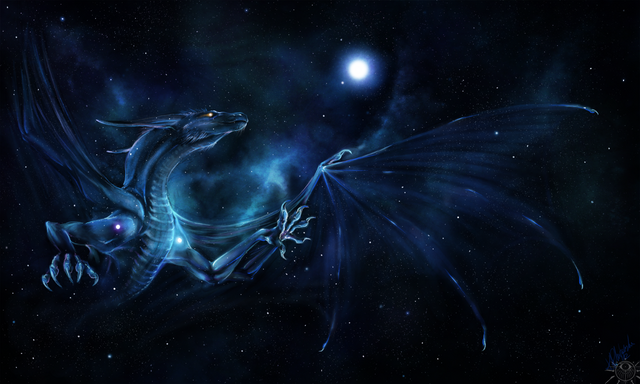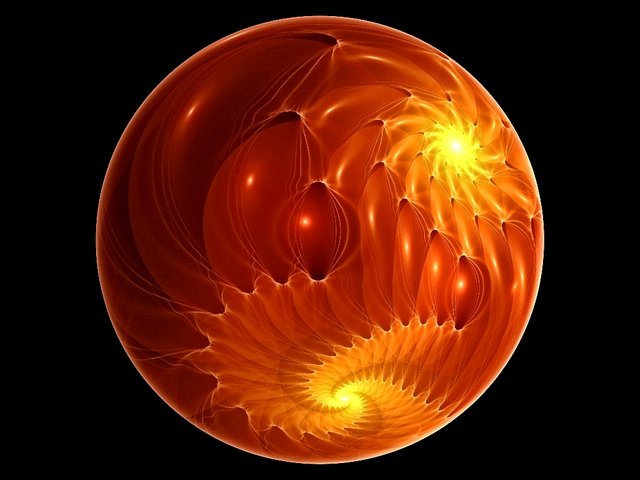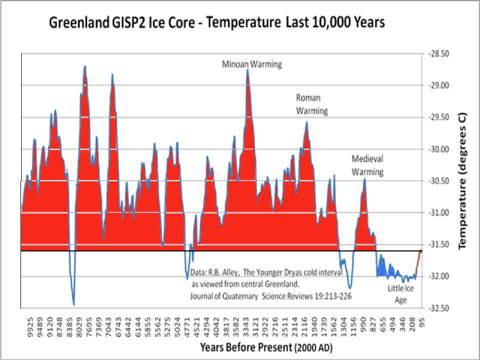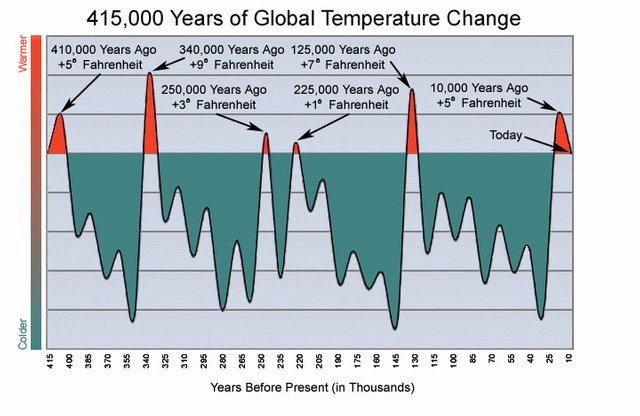Weird Science! : Here There Be Dragons!

Here's an interesting thought experiment for you.
What happens when you squeeze an object really hard while cooling it down at the same time?
It will of course begin to get denser and denser, changing it's material properties.
Each of these density variation results in what are called phase transitions and all of the following are states of matter as we know them.
At the bottom end, you have bose einstein condensates, a new phase of matter we are just beginning to explore.
Beyond that, you have the everyday states of matter.
Solid, liquid, gas and finally plasma.
At the far end of the scale, you have quark / gluon plasmas.
Objects so energetic that they exist for fractions of a second, and are the domain of our good friend @lemouth who is a particle physicist at CERN where he works on the LHC. He's a literal Quantum Mechanic!
Most highly energetic events eventually end up as gamma rays though.
Gamma rays are just highly energetic photons.
The energy of light is a function of it's wavelength E=hf
A photon with a wavelength equal to the Planck length would have an energy of about 7.671 × 1028 eV or 1.229 × 1010 joules (12.29 gigajoules)
It would be the output of the world's largest power plant, packed into a grain of rice.
You could never manage to eat this grain of rice it would eat you first.
This would be a black hole!
Although that blackhole would evaporate in nanoseconds due to hawking radiation.
Doesn't that make blackholes technically a state of matter?
Or would it really form a blackhole in the first place?
If we use light to look at the structure of an object, we need to have it's wavelength preferably smaller than the size of the details we wish to look at. Probing an object that has a (linear) size equal to the Planck length, requires that the energy of the photon be greater than the mass of a black hole of that "size". So, a classical black hole would prevent us to see details inside that object. We are lead to an apparent contradiction, which suggests an incompatibility between Relativty and Q.M. – André May
One thing about black holes is that any time we say black hole what we are really saying is...

CAUTION!!! HERE THERE BE DRAGONS!
When we start seeing dragons or unicorns in the math, what it really means is that we have reached or possibly exceeded, some fundamental limit to our understanding.
We don't have a theory that unifies QM & Gravity yet. We have a few theories that seem to be getting close, but the point where all our theories begin to break down...?
Blackholes!
Maybe the problem isn't the theories themselves, but the blackholes? What if blackholes don't actually exist?
What if they just represent the place where relativity actually meets quantum mechanics?
What if QM already won the battle over gravity well before we even got there?
Here is what I mean...
When a star collapses, a black hole is hardly the only outcome. The most likely outcome is actually a neutron star. A neutron star is where gravity is so immense that the electrons and protons combine to form neutrons. The neutron star is prevented from further collapse by the pauli exclusion principle.
This is called Neutron Degeneracy pressure. It represents a fundamental limit for most stars.
But at this level, the whole star begins to take on some interesting characteristics.
It is hypothesized that a neutron star acts like a single giant atom.
In otherwords QM effects already are being exhibited at the macroscale and we are nowhere near blackhole levels of density.
Yet if you add more mass, you end up with the hypothesized "Quark" star. Everything at this point has ceased having individual identity and behaves like a single large quark.
Add even more mass and you reach the Chandreskar limit. This is believed to be the point of no return, at this point the whole thing collapses into a black hole.
But what if it just doesn't?
There are theories that a quark star and a bose einstein condensate should behave roughly the same.
Since a BEC represents as close to the absolute 0 point of energy in a material, it is most effected by quantum vacuum fluctuations.
So what if we permit that at the Chandrasekhar limit, space and time are still maximally warped to the point that the escape velocity would need to exceed C, in otherwords we permit an event horizon, but instead of a singularity on the other-side you find what?
Well most likely the densest, coldest material otherwise possible.
A very large, thick shell of bose einstein condensate.
But if it's a shell then what is the shell around?
This is where it gets interesting...
If we accept that the planck length is the smallest length at which anything can be said to "have occurred", and we also accept that photons can in fact be blue shifted to a wavelength shorter than the planck length. Then the only plausible thing that could be there, are bubbles of new space time.
Not just our own space time warped, but literally a whole new universe being constructed at a rate of about 21 micrograms for each photon that happens to fall in. Something like this would be prevented from further collapse by the pressure of the baby universe growing inside of it. Interestingly, this allows for the creation of new energy ex-hilo, you get more energy than is put in.
It violates conservation of energy, but then again so does dark energy. Unless of course, our dark energy, our vacuum energy is coming from a similar process. But that would mean we're inside one of these things too?
This expanding baby universe, represents a new type of degeneracy pressure, which performs a function similar to the neutron degeneracy pressure, but this would be a "spacetime degeneracy pressure". Meanwhile since it would be sustained by gravitational vacuum energy. It would be more rightly called a GRAvitational VAcuum Star or GRAVASTAR

Perhaps then... Here be the dragons?
Further reading...
New Horizons in Gravity: Dark Energy and Condensate Stars
Slowly rotating thin shell gravastars
Construction of higher dimensional charged gravastars
Can accretion disk properties distinguish gravastars from black holes?
Distinguishing Gravastars from black holes will be difficult, as according to my understanding (general relativity and quantum gravity being not my field at all), their "observable" (or would-be observable) properties are the same. Both are probably possible and both are probably as not testable as each other with the knowledge of today.
But both hypotheses resist pretty well all current tests.
Thanks so much for your insight! Like I said, "Here be dragons!"
I love this idea! It makes sense, it feels right.
Thank you so much! I'm really glad you enjoyed it!
OMG another brain orgasm! On third read. WOW!!!!
Some folks have been talking about something called the multiverse, in which there are an infinite number of universes that all occupy the same space but are somehow dimensionally separate. Some about M-Branes...and SuperString and other things that sound like the results of your 2 year old left unsupervised.
Suppose that it's right? They also say that the only connection between all those universes is gravity.
So...so called 'space time' isn't flat. it's got dimples from where other planets and stars distort it as a result of gravity.
So what happens if a sun in one space lines up with a sun in an other space...would their gravity add to each other?
Suppose it happened to planets?
Dinosaurs...just think about dinosaurs. They were so big that if they existed today their legs would break when they stood up. They couldn't exist in todays gravity. Where'd the extra gravity come from?
We now return you to our normally scheduled rant.
Suppose a LOT of suns line up in one spot? From a distance what would it appear to be?
Suppose a LOT of suns, all of which were in other dimensions, line up , but there is no sun or anything, in this universe?
Just a pothole..
hmmmmm?
Actually the latest science is that the bone structure of the largest dinosaurs was honeycomb and filled with mostly air. Nothing changed in gravity during this time, but the material we used to think they were made of, wasn't what they were actually made of. They were more like birds than lizards. Which makes sense, because I had T-Rex's grandchild for supper this evening (chicken).
OMG!!! A giant CHICKEN!
(ahem)
speaking of birds...they used to be Yuuuuuuuge.
.
today the biggest bird in a condor.
the Gooney Bird is called that for a reason. It can barely get off the ground.
what happened?
What happened?
Reduction of oxygen & CO2.
Our climate is much cooler and drier than it used to be, this means the air is thinner than it was back then.
Back then if you took a metal baseball bat and hit a tree with it hard enough it would burst into flames.
awww.
You're pulling my leg.
The News said just the other day that it's the warmest now that it's ever been.
...and that the CO2 content was the highest EVAH!
Yeah they're wrong about that. We've only been keeping records for a little over 100 years. Anything beyond that is guess work. However large animals need large amounts of oxygen and large plants need large amounts of C02.
The types of plants in places like the arctic were tropical.
So the earth has been much warmer. Just not warmer since we started keeping records. Then again we are exiting a very narrow temperature range that has held for most of human civilization. So who knows how humans who evolved during a cold time will react to it getting both much warmer and much colder.
Earth isn't heating up, it's expanding it's highs higher and it's lows lower. The range is the change.
but..but..but...Obama SAID!!!
and 97% of Scientists agree.
it's settled science.
oh...wait.

uh....ohhhhhhh.

Pretty much yeah. There was very little difference between T-Rex and a chicken in terms of overall anatomy. Chickens are even sometimes born with teeth, it's as rare as hen's teeth, but it's been known to happen!
No actually, hollow bones are stronger than solid bones if the hollows have the correct geometric shapes. Such as a honeycomb pattern.
Plus the air chambers provide for compressability that we otherwise couldn't explain.
You see the muscles attach with ligaments to the bone, but many of those attachments were always to small for the amount of muscle that would have been required had the bones been solid.
New imaging tells us it was mostly hollow bone full of air, so far less muscles were needed.
I still wouldn't recommend going back in time and punching a T-Rex though.
His head was still perfectly capable of crushing cars. The lighter bones just meant he was much more agile and moved much faster than in the movies.
To answer your question about Gravity it appears to be constant at all places through the universe. Remember when we look into space we are looking back in time. The gravitational constant holds true in all cases.
There isn't a very good proxy for gravity, it seems to be unique amongst the forces, although klein had it unified with electromagnetism at one time...
https://en.wikipedia.org/wiki/Kaluza%E2%80%93Klein_theory
You mean the moon, mars, jupiter, the earth, the sun and beta caradyne all have the same gravity?
The heavier (more massive) an object is, the more gravity it has (it bends spacetime more). Thus, since the moon is less massive, it pulls on you less, so you'd weigh 1/6 your current weight. You'd be utterly crushed on Jupiter, which is much more massive.
As a function of their mass they do.
Keep in mind that gravity isn't some mysterious force.
It's just a geometric property. It's the degree of curvature in an otherwise flat spacetime and the degree of curvature is a function of mass / energy density.
and what curves the space time?
Mass
And does all the mass have to be in THIS universe?
What about mass in a parallel universe?
Does it have any effect?
Suppose THAT is what dark matter is
Suppose THAT is the missing mass?
Wouldn't that suck?
er...I mean..